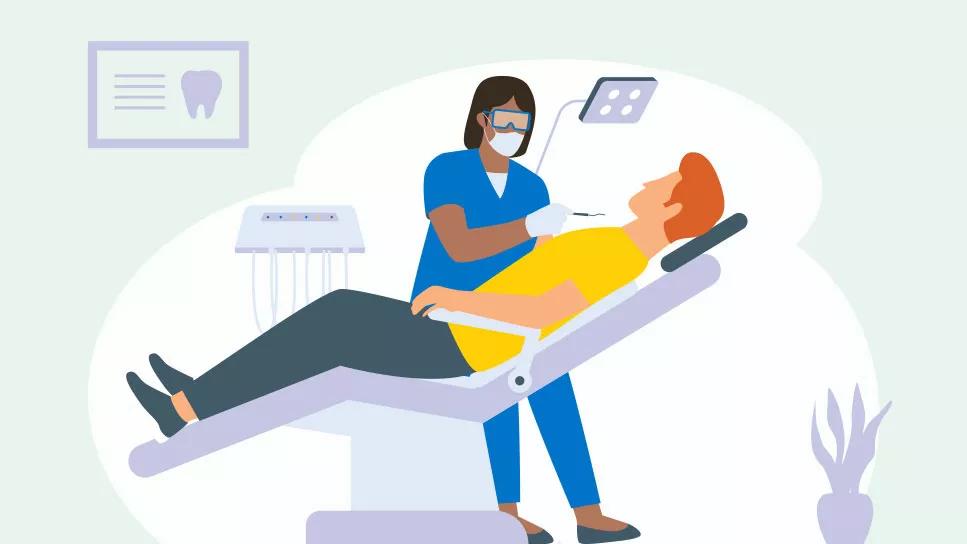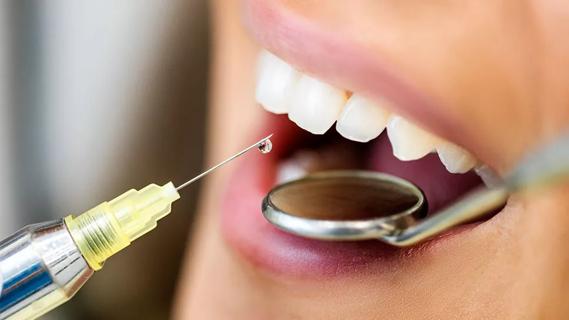If you have naturally red hair, feeling the pain may be in your DNA

Question for the redheads: Do you ever find yourself asking for extra novocaine during dental procedures?
Advertisement
Cleveland Clinic is a non-profit academic medical center. Advertising on our site helps support our mission. We do not endorse non-Cleveland Clinic products or services. Policy
You’re not alone. Experts have long suspected that people with red hair need more anesthetic drugs to get the same results as people with other hair colors.
“Red hair is the only physical characteristic that indicates how much anesthetic a person needs,” says anesthesia researcher Daniel Sessler, MD. “Redheads report more pain during procedures. Some studies also show that people with red hair are more resistant to local anesthetics. And they may need more general anesthesia to keep them sleeping during medical procedures.”
Most of the research on this topic is older and limited. That may be because less than 2% of people worldwide have naturally red hair. But as experts do more modern and robust research, they’re learning more about the genetics associated with red hair and anesthesia.
Experts have studied pain in redheads since the early 2000s. But the research really took off around 2004, when an article in the journal Anesthesiology reported that people with red hair and the MC1R gene mutation needed as much as 20% more anesthesia. Several studies backed these findings up (and elaborated on them) in the decades since its publication. More on them in a bit.
But the results haven’t always been consistent. For example, a 2012 paper found no association between red hair and anesthesia effectiveness. Another study, this one from 2020, reported that red hair and pain sensitivity may come from two unrelated genetic changes (mutations).
Advertisement
The research isn’t conclusive, but experience is a form of evidence. And it’s hard to ignore all the anecdotal data that suggests anesthetics aren’t as effective on people with red hair.
“The good news is that red hair or not, you’ll get the amount of general anesthesia that’s right for you,” Dr. Sessler reassures. “Anesthesiologists are experts at giving people the right amount of medication to keep them comfortable during a procedure. They’ll adjust anesthetics as needed for your specific situation,” he says. “No anesthesiologist gives everyone the same dose.”
Want to better understand the research on red hair, pain sensitivity and anesthetics? Dr. Sessler gives us the rundown.
The same gene that gives someone fiery locks may also lower their pain tolerance. The melanocortin 1 receptor (MC1R) gene produces melanin, a pigment that gives color to skin, eyes and hair. But people with red hair have an MC1R gene mutation. As a result, it produces the red pigment pheomelanin instead of melanin, which is black.
“Redheads are the only people with this gene mutation,” Dr. Sessler clarifies. “But MC1R is just one type of melanocortin receptor. Other types relate to brain function. And the mutation that affects MC1R may also affect those other melanocortin receptors.”
Both nonhuman and human studies report the need for more anesthesia in redheads. The 2004 study that did the most to establish this link examined gas anesthesia in people with red hair compared to those with dark hair.
Though the study was small, researchers concluded that people with red hair and the MC1R gene mutation needed as much as 20% more anesthesia.
A 2004 nonhuman lab study with the MC1R mutation also recognized the need for additional anesthetic to achieve the same sedation.
“Of course, people with blond, brown or black hair will also vary in how much anesthesia they need. The dose must be personalized for you. But in general, people with red hair require more anesthetic than people with other hair colors,” Dr. Sessler shares.
The Journal of the American Dental Association reports that people with naturally red hair tend to fear dental care more than others. The reason may be related to pain and how well local anesthetic (used for numbing tissue) works for redheads.
A commonly used local anesthetic is lidocaine, which can administered topically as a cream or gel or injected just below the skin. A 2003 study found that both forms of lidocaine were less effective in people with red hair, with the injected lidocaine showing the most significant difference.
Advertisement
“It’s reasonable to inform or remind your dentist that you may need more local anesthetic,” Dr. Sessler says. He also advises redheads that local anesthesia may take longer to kick in. Waiting an extra few minutes may make the anesthetic more effective and reduce dental pain.
In 2003, researchers observed that people with red hair didn’t have an increased sensitivity to electrical stimulation compared to people with dark hair. But they had a higher sensitivity and lower tolerance for cold and heat pain.
“There are many types of pain, and we’ve only tested a couple,” Dr. Sessler says. “But we have a better understanding of how redheads might tolerate temperature and electrical stimulation pain factors associated with surgery.”
If you have naturally red hair, Dr. Sessler recommends that you:
Advertisement
“Don’t avoid medical or dental care, even if you’ve had an uncomfortable or painful experience in the past,” Dr. Sessler emphasizes. “Your healthcare provider will personalize your care, including the amount of anesthetic you need.”
Advertisement
Learn more about our editorial process.
Advertisement

Spinal blocks provide complete numbing for shorter periods, while epidurals can allow for some feeling

Epidurals can help with the discomforts of labor and delivery — but whether you want one is entirely your choice

Advances in technology and medications have made the process safer than ever

The numbness and tingling should wear off in about two hours

Looking down at your smartphone or computer screen can stress muscles in your neck, shoulders and back

Leg-related symptoms indicate DVT, while chest symptoms point to a pulmonary embolism

Scalp cancers can occur because of long-term sun exposure

Lice don’t jump — but they can spread with direct head contact

Babies can get congested easily, but you can calm their cough by keeping them hydrated, using nasal drops and running a humidifier

Weight loss may cause loose, sagging skin and muscle loss to your rear

Several conditions, like vitiligo and fungal infection, can cause a loss of pigmentation, leading to white spots or patches on your skin